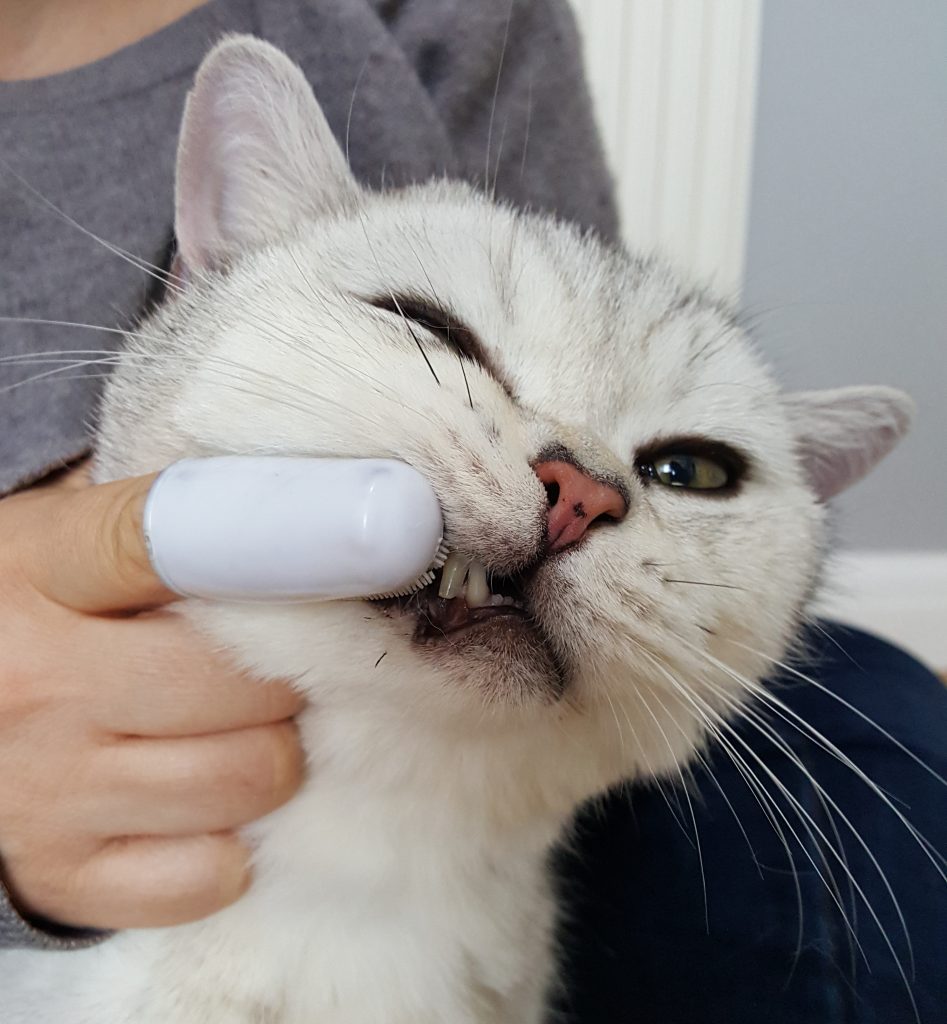As a feline vet, but also a cat owner, I dread asking my lovely clients if they brush their cat’s teeth! The question is met with incredulous eyebrow raises, mumbling into the backs of their hands or even laughter. Of course most of us don’t regularly brush our cat’s teeth – we like our fingers and want to keep them just where they belong! However… brushing is the most effective way to reduce plaque and the incidence of dental disease – after all we as humans are advised to do it multiple times a day, so why shouldn’t the same ring true for our cats?
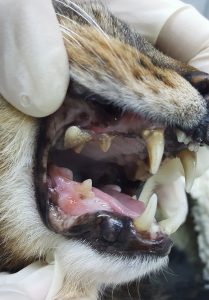
Dental disease is painful and leads to increased bacteria within the bloodstream, so it is important that we try to prevent it for the welfare of our kitties. Gingivitis (inflammation of the gums) is reversible by brushing, but if left will progress to irreversible periodontitis and the eventual necessity for tooth extraction. This can be a big procedure for our patients to go through and a costly one at that. So how do we go about brushing our cats’ teeth in a way that isn’t stressful for you or them, and how can that can become part of a regular routine?
When to start
The best time to start is when your cat is a kitten, as getting them into a regular routine from an early age improves your chances of them seeing the process as a positive one, rather than something they dread. However: never say never! I have successfully gotten many of my owners to brush their older cats’ teeth and the key is patience, and lots of it. The action of tooth-brushing, and let’s face it putting anything into a cat’s mouth (for those of you that have ever tried to give a cat a tablet), is going to be quite strange and daunting for your cat.
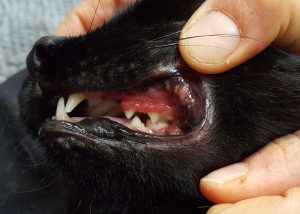
Before you start with an older cat it is wise to have a dental examination from one of our nurses or vets to check that there is no pre-existing dental disease as you would not want to hurt your cat and result in a negative experience on the first go. Tooth brushing in cats with significant dental disease is often most successful after the cat has had a dental procedure and any extraction sites have healed. Ultrasonic scaling and polishing will have removed much of the calculus from the teeth, and any diseased (and therefore painful) teeth will have been extracted. Then you can proceed with the tips below…
Creating a positive experience

I recommend finding a paste-like treat that your cat loves, or use a flavoured cat toothpaste (many of which have additional tooth cleaning benefits), and start by placing this on a finger and get your cat used to licking it off your finger. NEVER use human toothpaste as these can be toxic for cats when swallowed. If you start with something like Lick-e-lix, switch to a more effective toothpaste once you develop a good routine.
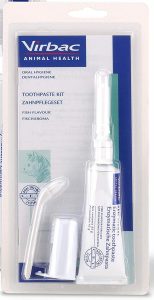
Eventually when this becomes a positive daily experience, you can gently wipe some of the paste onto the lips/nose so your cat gets used to you touching their face.
Once they tolerate that, place the paste on your cat’s toothbrush and get your cat to lick it off of this so they associate the brush with a nice experience and a yummy treat. There are several different types of toothbrushes available, from plastic brushes with handles to rubber or even cloth finger covers so if you find one type difficult to use, try something different.
Over time, gradually introduce the paste-covered brush into the mouth until you are able to gently brush each tooth in turn. It’s worth noting that you don’t actually have to open your cat’s mouth to do this (which is good because they hate that…) – just lift the lip a bit to expose the outer surface of the tooth. If they tolerate your finger but not the brush in their mouth, even rubbing a bit of the special toothpaste on their gums could in some cases be beneficial (check with the instructions on the package) so don’t give up too quickly!
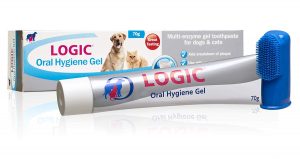
This whole process may take weeks to months, but I promise it will be worth it for the future of your cat’s mouth, and your bank balance!
Take it at their pace
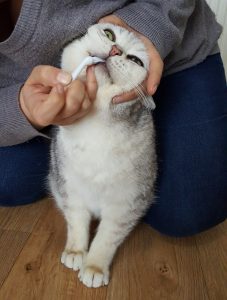
The key to holding your cat for this is, as in almost all cases with these precious animals – LESS IS MORE! If you grab your cat forcefully, or hold them too tightly they will anticipate something terrible and you will stand no chance in getting them to co-operate. If your cat decides that 30 seconds is enough then so be it – once you create a negative situation you can be back to square one, or worse – so the key is little and often.
Owners that I have known to persevere with brushing their cat’s teeth have found it to be a rewarding experience and even a bonding one. I certainly notice the difference in their cat’s dental hygiene when I’m examining them – they almost seem to enjoy showing me their beautiful pearly whites!
References
A good site with lots more information and a “How-to” video is provided by International Cat Care: https://icatcare.org/advice/how-brush-your-cats-teeth


